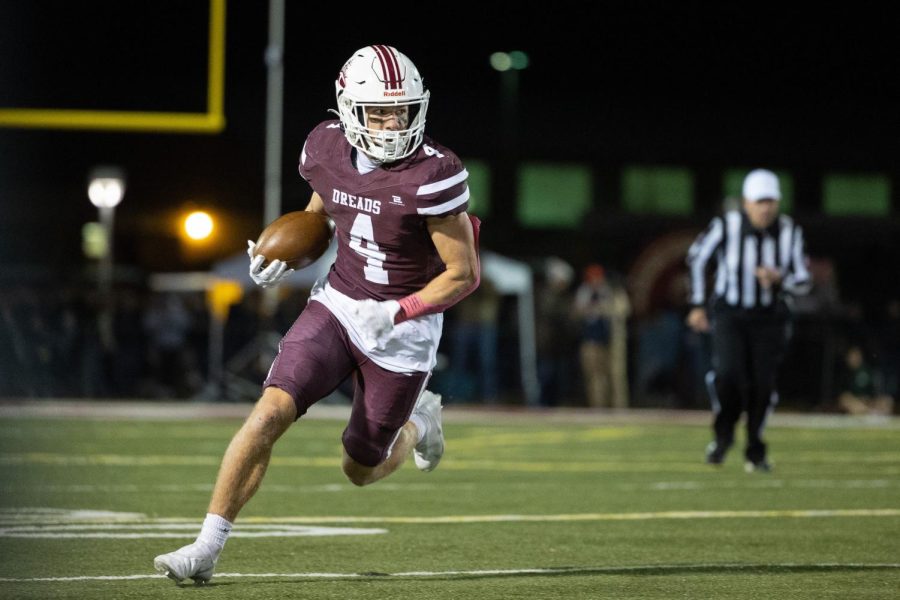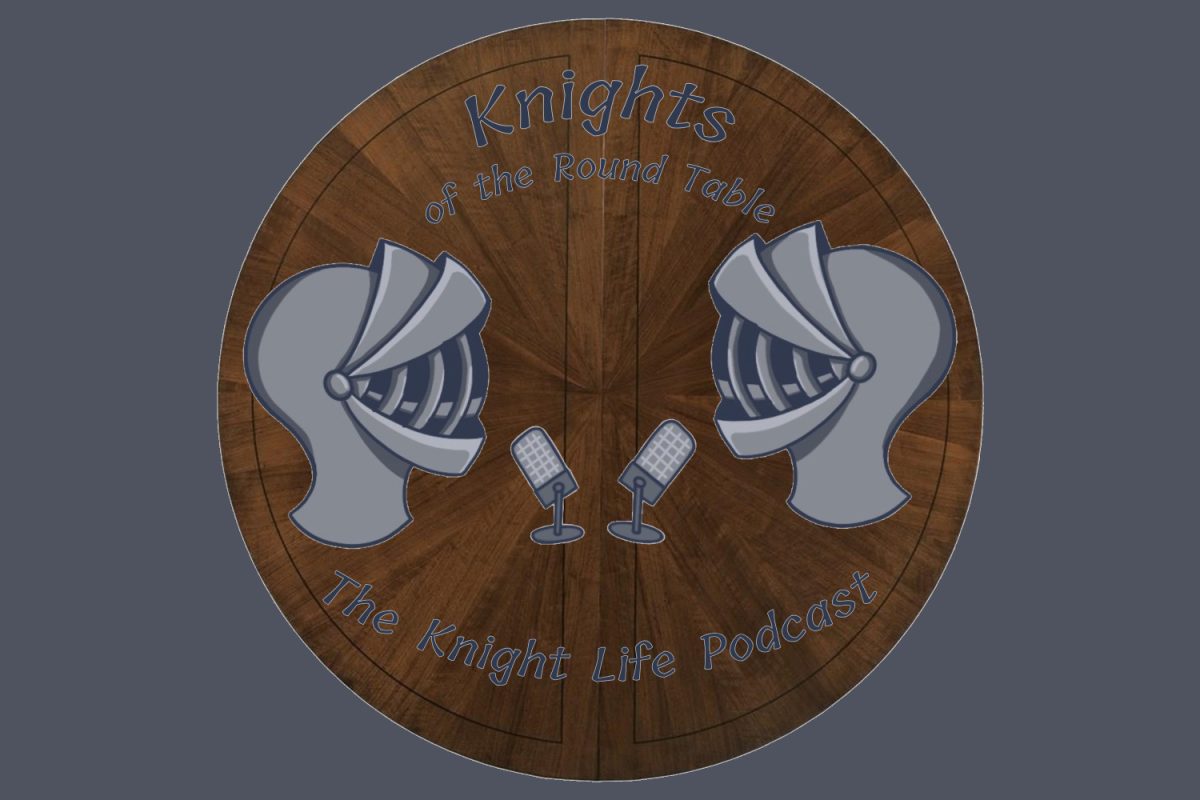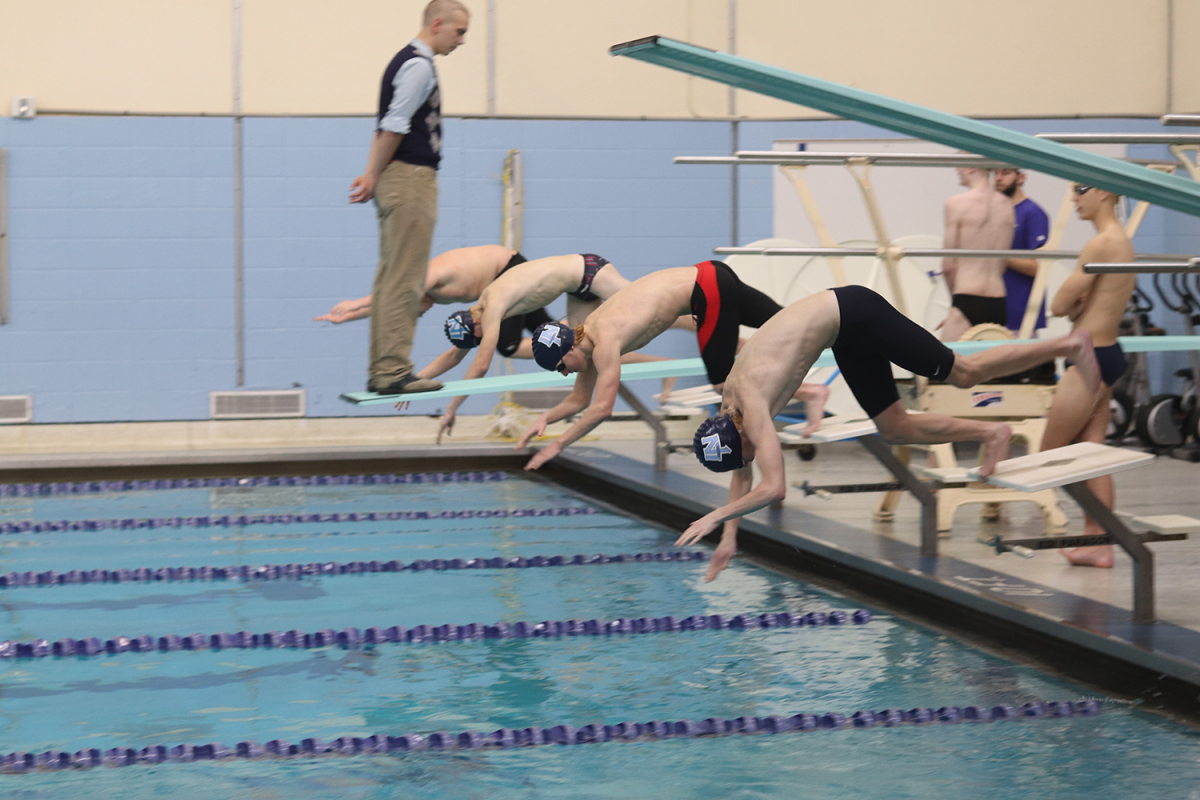High school recruiting star ratings don’t matter
4 Star University of Michigan commit Cole Cabana runs down the side line in his last high school game
April 5, 2023
College football experts, NFL scouts, coaches and even players have argued about whether “recruiting stars” matter.
Highly sought after players out of high school are recruited by colleges using a star rating system. These ratings come from a variety of recruiting websites. Players can be rated from 2 stars to 5 stars, and any player that is considered not good enough to earn a star rating, but is still being recruited by colleges, is labeled as “NR” which stands for not ranked.
Popular recruiting websites such as 247Sports, Rivals, On3 and ESPN have really changed the recruiting game and how people look at athletes out of high school.
Each website has their own ranking system and technique of rating players. While ESPN may have a player ranked 24th nationally as a 4 star, On3 could have them ranked 16th nationally as a 5 star. Players are rated on speed, size, athleticism and instincts. Each recruiting analyst has their own way of deciphering how skilled a player is.
Once a high school player is classified and enrolled in their recruiting class when they’re a senior, colleges can start recruiting the players to play for them.
The recruiting process involves home visits and interviews, college campus tours, athletic buildings tours, and name image and likeness (NIL) deals.
On a recruiting website there are profiles for each player and it previews their top schools and where they are likely to go. Verified recruiting and school insiders will insert a “crystal ball” which is an unbiased inside prediction of where the recruit will go.
Once a player has gone through the recruiting process with every school they wanted to, the athlete will commit and sign with the school along with their National Letter of Intent (NLI) which is their promise to the school.
When asked about the recruiting process, Athletic Director at Andrew Laboe said it’s different depending on the sport.
“It is generally done through club sports, so most college coaches see the student athlete play in seasonal sports then college coaches and recruiters come here when a student athlete is on their list, and if another athlete steps up, the recruiter will start following him, get his name and have that athlete on their radar,” Laboe said.
He then got into how recruiting in different sports differs from one another.
“With football and basketball, talented student athletes will go to camps to be evaluated. If that student athlete impresses enough people and goes to multiple camps, they will start gathering star ratings and attention from recruiters,” said Laboe.
Going to more camps eventually leads to more attention on websites from insiders and then can lead to national attention and committing to the college of their choice.
Less than 2% of athletes coming out of high school get offers from Division 1 schools, which is about one out of every 57 athletes.
Then, there are arguments that stars don’t matter, that they are mis-assigned and don’t take into account a lot of things that a football player should have.
Even though a player might be a five star, that doesn’t mean they have a better chance of making it in the National Football League than a three star player.
There are some highly touted five star recruits that were good in college and made it in the NFL as expected, but there are plenty of three and four star recruits and even unrated recruits that have become NFL legends over the years.
Some examples of players that were lowly rated that made it big in the league are Aaron Rodgers, Ladanian Tomlinson, Russel Wilson, Cooper Kupp and Davantae Adams, who were all 3 star or lower-rated recruits out of high school.
At the same time there are many examples of 5 star recruits also going on to be stars and memorable players such as Greg Olson, Matthew Stafford, Adrian Peterson and Julio Jones, who were told they were going to be great from high school to the league and it turned out to be true. This makes the argument that stars are what ultimately determines a player’s success very compelling.
Now there definitely is a talent gap between five star recruits, but that doesn’t mean a four star athlete’s development has more potential than a five star necessarily.
The problem with stars isn’t whether they matter or not, the problem is when it’s all people look at. Ultimately, the athletes that are willing to do whatever it takes to strive for greatness and persevere through any controversy are the ones you’ll find competitive at the highest level.













Ender Ross • Apr 5, 2023 at 1:28 pm
Nice article! But who wrote it?